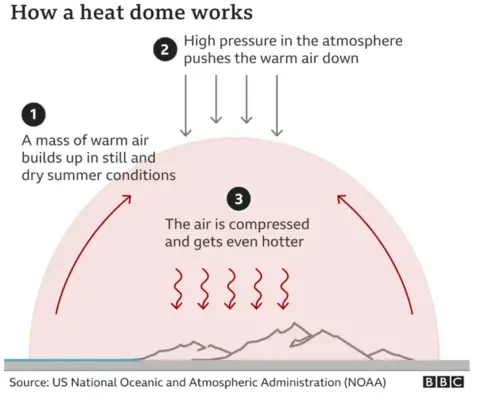ARTICLE AD BOX
13 minutes ago
By James FitzGerald, BBC News
Trump fans brave blazing Arizona heat to attend event
New daily temperature records have been set across the the US Southwest, as dangerous heat plagues the region.
Among Thursday's record-setting locations was Phoenix, where the heat hit 113F (45C) and 11 people were taken to hospital while waiting to attend a Donald Trump rally.
National Weather Service (NWS) alerts remain in place on Friday for the wider area, covering a population of around 20 million people.
Scientists say extreme weather events are becoming more frequent and intense as a result of climate change.
Although the official start of summer is still two weeks away, NWS has advised people in the affected areas to limit outdoor activity and stay hydrated.
It earlier warned that there would be little overnight relief from the scorching temperatures.
On Thursday, NWS thermometers showed new highs for 6 June in locations that included Las Vegas and Death Valley. The latter location hit 122F.
Reporting the reading of 113F at Sky Harbour, the NWS's Phoenix office said this exceeded the previous high for 6 June that was set in 2016.
Phoenix is America's hottest big city, and there were 645 heat-related deaths last year in the wider Maricopa County.
Firefighters have been put on standby to submerge heat-stroke victims in ice. Some popular local hiking trails have been closed off.


The group of 11 Trump rally attendees were later released from hospital, the AP news agency reported.
The Southwest's first heatwave of the year is the result of a heat dome: an area of high pressure in which hot air is pushed down and trapped, causing temperatures to soar over large areas.
Temperatures are about 20-30F above average for this time of year.
While heat domes were once described as rare, they are becoming more common and intense because of human-induced climate change, scientists say.

 7 months ago
22
7 months ago
22








 English (US) ·
English (US) ·